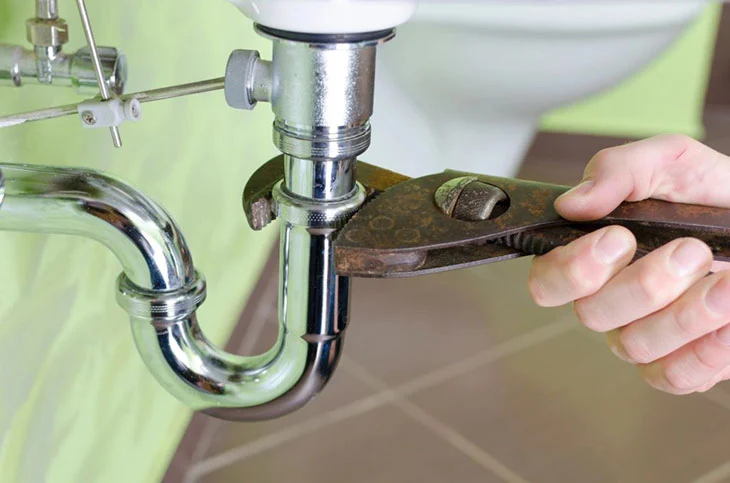Installing sanitary pipes is a critical component of any plumbing project, whether you’re building a new home or renovating your bathroom. A well-installed sanitary system ensures the smooth removal of wastewater, preventing leaks and foul odors. This guide will walk you through the process of installing sanitary pipes, helping you complete the job efficiently and safely.
Whether you’re a DIY enthusiast or just curious about how plumbing works, understanding the installation process can save you time, effort, and potential future headaches. In this article, we’ll break down the tools you’ll need, the steps involved, and a few essential tips to ensure your sanitary installation is flawless. This guide is particularly useful if you’re undertaking sanitary installation in Cork and Kerry, Ireland where building regulations may need special attention.
Tools and Materials You’ll Need
Before getting started, make sure you have the following tools and materials ready:
- PVC or cast-iron sanitary pipes (depending on your preference)
- Pipe fittings (elbows, tees, and couplings)
- Measuring tape
- Pipe wrench
- Pipe cutter or saw
- Pipe cleaner and glue (for PVC pipes)
- Level
- Teflon tape
- Safety gear (gloves, goggles)
Choosing the Right Pipes
Sanitary pipes come in different materials, with PVC being the most common due to its durability, lightweight nature, and corrosion resistance. Cast iron is another option, typically used for larger systems or in commercial settings. For a domestic setup, PVC is generally the preferred material.
Make sure the pipes you select are the correct diameter, as sanitary systems require pipes of specific sizes depending on the fixtures they’re connected to.
Step 1: Plan Your Installation
Before any actual installation begins, it’s essential to plan your pipe layout. Your sanitary pipes should lead waste away from sinks, toilets, and showers to the main sewer line or septic system. A proper plan should include the pipe path, the types of connections required, and locations for vents and cleanouts.
In the planning phase, you’ll also need to consider the local building codes. Depending on where you are, such as in Cork and Kerry, Ireland, you may need to get permits or adhere to specific guidelines, especially when connecting to a public sewer system.
Step 2: Measure and Cut the Pipes
With your plan in hand, it’s time to measure the lengths of pipes you need. Measure the distance between each fixture and the main sewer line. Add a little extra to account for fittings and any potential mistakes.
Once measured, cut the pipes using a pipe cutter or saw. If you’re working with PVC, make sure the cuts are clean and straight. After cutting, use a deburring tool or sandpaper to smooth the edges of the pipes, removing any plastic shavings or burrs that could affect the fit of the pipes.
Step 3: Assemble the Pipes and Fittings
Start dry-fitting the pipes and fittings to ensure everything lines up correctly before applying any adhesive or connecting them permanently. Use elbows and tees where necessary to connect multiple fixtures to the main waste line.
Important Tip:
Always ensure that the pipes are sloping downward, typically at a rate of 1/4 inch per foot, towards the main sewer or septic line. This ensures proper drainage and prevents water from backing up.
Once you’re happy with the fit, you can move on to gluing or threading the pipes together, depending on the material.
Step 4: Glue the Pipes (For PVC Pipes)
If you’re using PVC pipes, you’ll need PVC cleaner and glue to secure the pipes and fittings together. Start by applying the cleaner to the ends of the pipe and the inside of the fittings. After letting it dry for a few seconds, apply the glue in the same areas and quickly connect the two pieces.
Make sure the pipes are aligned properly before the glue sets, as PVC glue can harden quickly. Hold the pipe and fit together for about 30 seconds to ensure a secure bond.
For cast-iron pipes, you’ll likely use threaded connections or compression joints. In this case, Teflon tape should be applied to the threads to ensure a watertight seal.
Step 5: Install the Vent Pipes
Vent pipes are an essential part of any sanitary installation. They allow air to enter the plumbing system, which prevents the buildup of vacuum pressure and ensures smooth drainage.
The vent pipe typically runs vertically from the waste pipes and exits through the roof. Make sure the vent pipe is installed at the correct height and is unobstructed.
Step 6: Secure the Pipes
Once the pipes are glued and assembled, secure them to the walls or floors using pipe hangers or straps. Make sure the pipes are well-supported and the slope is maintained throughout the system. For longer runs of pipe, add supports every 4 feet to prevent sagging.
Step 7: Test the System
After everything is connected, it’s time to test your system. Start by turning on the water at each fixture and check for any leaks at the joints and fittings. If leaks occur, you may need to re-tighten threaded joints or re-glue PVC connections.
Next, flush the toilet and run water through all the drains to make sure the wastewater flows smoothly to the main sewer line. If the water backs up or drains slowly, you may have an issue with the slope of the pipes or a blockage.
Step 8: Connect to the Main Sewer or Septic System
The final step involves connecting your sanitary pipes to the main sewer or septic system. This step may require professional help, especially if you’re working with public sewer connections. Ensure that the connection is sealed properly to prevent any leaks or odors from escaping.
In some areas, like Cork and Kerry, Ireland, you may be required to have a licensed plumber or inspector check the connection to ensure it meets local standards.
Final Thoughts
Installing sanitary pipes doesn’t have to be an overwhelming task. With the right tools, materials, and a clear plan, even a DIY enthusiast can successfully tackle this essential part of a home’s plumbing system. Remember to double-check local regulations, especially in specific regions like Cork and Kerry, Ireland, and don’t hesitate to seek professional help if you’re unsure about any step.
A well-installed sanitary system will last for years, ensuring efficient wastewater disposal and keeping your home clean and hygienic.

